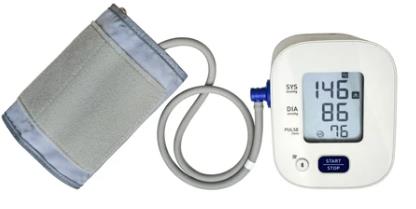Uncategorized Friday, 2024/11/15
Planned exercise can lower blood pressure, which has been widely recognized. However, researchers have paid relatively little attention to the impact of casual exercise in daily life.
Recently, a research report titled “Device-Measured 24-Hour Movement Behaviors and Blood Pressure: A 6-Part Compositional Individual Participant Data Analysis in the ProPASS Consortium” was published in the journal Circulation. Scientists from University College London and other institutions found that adding a small amount of exercise in daily life, such as climbing stairs or cycling, can help lower blood pressure. Just an additional 5 minutes of exercise per day can significantly improve blood pressure.
The researchers combined data from six studies by the ProPASS Alliance, including 14761 participants from five countries. Each participant wore a wearable accelerometer on their thigh to measure their activity within 24 hours and their blood pressure was measured. Participants’ daily activities include approximately 7 hours of sleep, 10 hours of sedentary behavior, 3 hours of standing, 1 hour of slow walking, 1 hour of brisk walking, and 16 minutes of exercise activities such as cycling or running.

Researchers divide daily activities into six behaviors: 1) sleeping; 2) Sedentary behavior, such as sitting; 3) Walk slowly, taking less than 100 steps per minute; 4) Walk quickly, at least 200 steps per minute; 5) Standing up; 6) More intense exercise, such as running, cycling, or climbing stairs.
The research results show that replacing any inactive behavior with 5 minutes of exercise can reduce systolic blood pressure (SBP) by 0.68 millimeters of mercury (mmHg) and diastolic blood pressure (DBP) by 0.54 mmHg. At the population level, a decrease of 2 mmHg in systolic blood pressure and 1 mmHg in diastolic blood pressure is equivalent to a reduction of approximately 10% in cardiovascular disease risk.
Researcher Dr. Jo Blodgett pointed out, “Our study found that for most people, even mild exercise such as climbing stairs or cycling can significantly lower blood pressure. The good news is that regardless of your physical condition, simply increasing a few minutes of exercise every day can have a positive impact on blood pressure
The study also emphasizes that even daily activities that improve heart rate, such as cycling, climbing stairs, or short runs, are beneficial for healthy blood pressure. For those who don’t exercise regularly, walking can also bring some positive benefits, but to truly change blood pressure, higher intensity exercise may be more effective.

Using this data, researchers simulated what would happen if a person replaced one behavior with a different number of behaviors every day, in order to speculate on the impact of replacing one behavior with another on blood pressure over a certain period of time. For example, replacing prolonged sitting with 5-minute brisk walking can significantly lower blood pressure.
Professor Emmanuel Stamatakis said, “Hypertension is one of the major global health issues, but there are relatively simple ways to address it besides medication. Doing an extra 5 minutes of exercise or vigorous activity every day can significantly lower blood pressure, highlighting the importance of short-term high-intensity exercise for blood pressure management.”
Hypertension refers to the sustained increase in blood pressure levels, which affects the health of 1.28 billion adults worldwide and is also one of the main causes of premature death. Hypertension can lead to various health problems such as stroke, heart disease, heart failure, and kidney damage. Due to the fact that hypertension usually has no symptoms, it is often referred to as the ‘silent killer’.
Professor Mark Hamer pointed out, “Previous studies have mostly come from strictly controlled exercise training studies with supervised or prescribed exercise plans. However, the difficulty of these studies is that although they can lower blood pressure, people usually return to sedentary habits after completing exercise programs. The uniqueness of this study is that we observed that free-range physical exercise in daily life may bring lasting benefits.”
Wearable activity-tracking devices, similar to smartwatches and accelerometers used in this study, are becoming important tools for patients to track exercise habits and manage risk factors such as hypertension. Researchers say that research platforms such as ProPASS are very powerful in identifying subtle patterns of exercise, sleep, and sedentary behavior, which have significant implications for clinical and public health fields.
In summary, this study reaffirms the importance of exercise in blood pressure control. The results indicate that there is a close correlation between a small amount of extra exercise and a decrease in blood pressure in people’s free lives. Just an additional 5 minutes of exercise per day can significantly improve blood pressure, which is of great significance for preventing and controlling hypertension.
Reference
Joanna M. Blodgett,Matthew N. Ahmadi,Andrew J. Atkin, et al. Device-Measured 24-Hour Movement Behaviors and Blood Pressure: A 6-Part Compositional Individual Participant Data Analysis in the ProPASS Consortium, Circulation (2024). DOI:10.1161/CIRCULATIONAHA.124.069820
